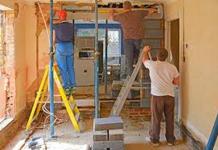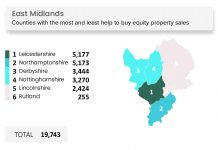Fastest Month on Month Increase

House lending approvals have seen the fastest month on month increase in over five and a half years, up 9.1%.
There were 65,778 house purchase approvals but on an annual basis they fell 12.9%.
This makes January 2015 the fifth consecutive month in which the number of loans has fallen on an annual basis.
‘Lenders have a desire to return to growth and the January lending uptick is testament to this, as borrowers key in to mortgages while interest rates remain at historic lows. However, undoubtedly, some potential borrowers remain thoughtful about the approaching election and are playing a waiting game,’ said Richard Sexton, director of e.surv chartered surveyors.
‘Whilst the Mortgage Market Review and LTI caps are preventing what has previously been perceived as higher risk lending, equally we have Help to Buy supporting and encouraging first time buyers. With the announcement that the Bank’s Monetary Policy Committee is going to be given new abilities to place caps on LTV ratios, it looks like the purchase mortgage market could be closely managed and scrutinised in the run-up to the General Election,’ he added.
The data also shows that loans to higher LTV borrowers grew 20.1% between December and January. The first month of 2015 saw 10,064 loans to borrowers with deposits worth 15% or less of their property’s total value, compared to 8,378 in December.
While this month on month growth is partly due to the increase in the total number of approvals, higher LTV borrowers also occupied a larger proportion of borrowers in January. Some 15.3% of borrowers were higher LTV, compared to 13.9% December.
On an annual basis, the proportion of higher LTV borrowers is 1.7% higher than January 2013, when they made up 13.6% of all house purchase loans.
The latest First Time Buyer Opinion Barometer from Your Move and Reeds Rains found that the number of first-time buyer property completions fell to 24,800 in December from 25,900 in November, a 4.2% drop. January’s month on month increase in mortgage approvals could, however, boost numbers of first time buyers further.
‘Help to Buy is doing its work, plugging the savings gap left by low interest rates, enabling first-time buyers to get on the property ladder despite only being able to save small deposits. Lenders are locked in a price war, offering ever lower repayment rates to try and bring in borrowers,’ explained Sexton.
But first time buyers can be challenged by the introduction of new regulation. No matter how you slice and dice it, caps add another layer of complexity for people fresh to the house-purchase market. With the Bank of England’s new powers to reign in LTVs, first time buyers are a group that could be more affected than others,’ he pointed out.
‘While regulatory supervision is clearly important, it needs to be nuanced. A combination of Help to Buy, LTI caps and LTV caps mean there are some conflicting drivers in the market that could leave aspiring homeowners below the property ladders’ bottom rung,’ he added.
A breakdown of the data shows that Yorkshire led the way for higher LTV lending, with 28% of all approvals in January being made to borrowers with a deposit worth 15% or less of their property’s value. The North West came next with 24% of all approvals being made to small deposit borrowers. The story is quite different for London, where just 7% of house purchase approvals were higher LTV.
‘Help to Buy is reaching the areas that need it most. Without Help to Buy stepping in to lift first time buyers into the range of higher LTV loans, we can see that the north could be suffering from a real crisis,’ said Sexton.
‘With a quarter of house purchase approvals depending on higher LTV lending in the North West, and even more than that in Yorkshire, the scheme is providing a lifeline for buyers otherwise priced out of the lower end of the mortgage market,’ he added.





































